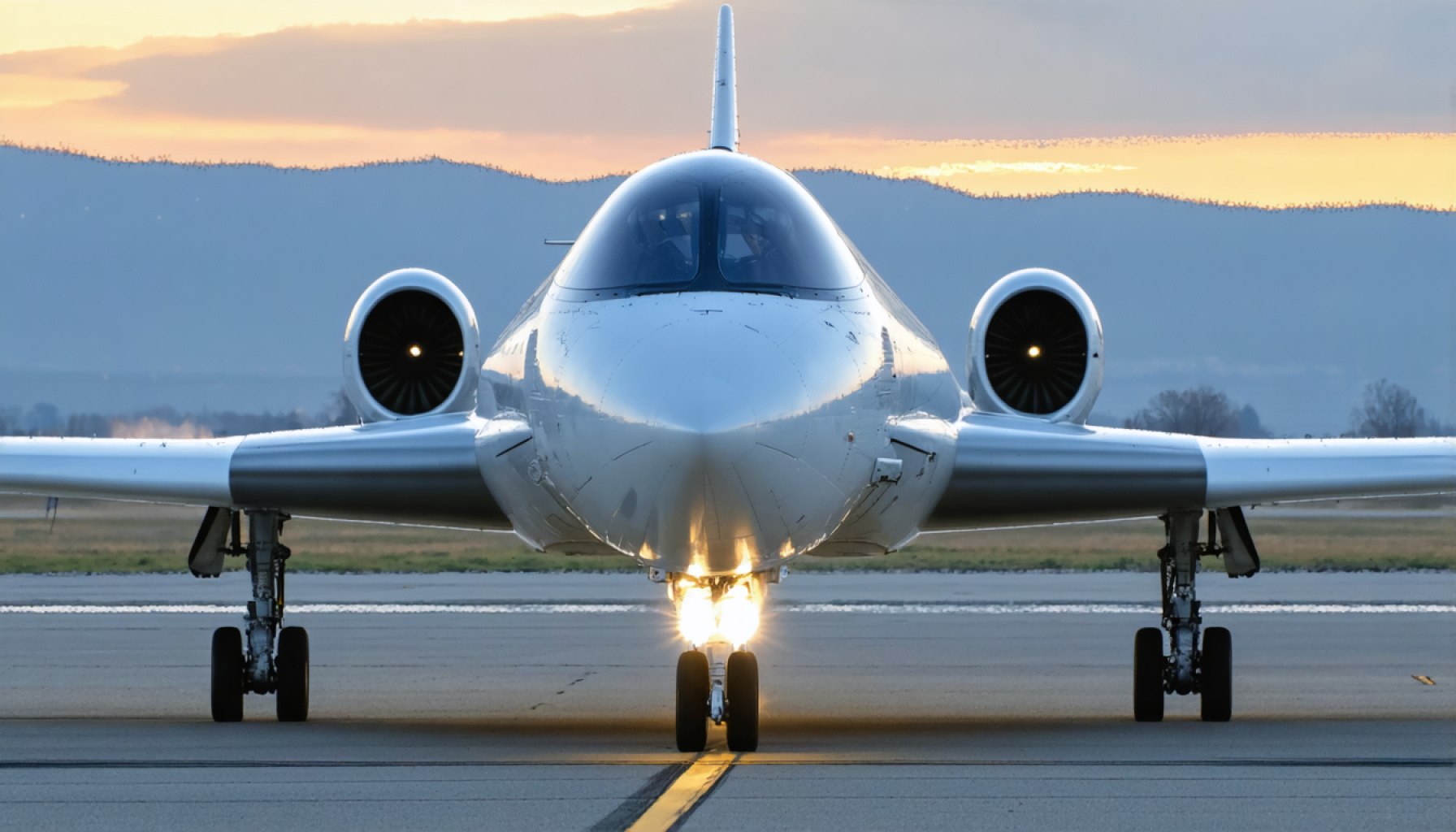- The U.S. Air Force successfully revived the F-35A “Frankenjet,” showcasing innovation and resourcefulness by using salvaged parts from damaged aircraft.
- Initiated in 2022, the project faced the challenge of reviving two disabled jets, overcoming damage from an engine fire and a landing gear incident.
- Collaborating with Lockheed Martin and the 388th Fighter Wing Maintenance Group, engineers combined components from both aircraft over more than two years.
- The project cost $11.7 million, surpassing expectations by producing a $63 million savings for the Department of Defense.
- Successfully tested, the “Frankenjet” is operational within the 4th Fighter Generation Squadron, reflecting advanced repair capabilities.
- This venture emphasizes determination and intellect, highlighting potential in recycled technology and innovative problem-solving in aviation.
A marvel of modern-day ingenuity takes flight as the United States Air Force triumphantly announces the revival of a seemingly doomed warplane: the F-35A “Frankenjet.” This formidable fighter jet, brought back to life with salvaged parts from other downed aircraft, stands as a testament to innovation, resourcefulness, and fiscal prudence.
Conceived in late 2022, this ambitious project tackled an engineering challenge that at first seemed insurmountable—breathe life into two grounded jets. One had been ravaged by an engine fire in 2014, and the other left immobile by a landing gear mishap in 2020. Rather than consign these technological marvels to the annals of aviation history, the Air Force, together with Lockheed Martin and the 388th Fighter Wing Maintenance Group, embarked on an audacious journey to preserve their essence.
The birth of “Frankenjet” was a feat not dissimilar to assembling a complex jigsaw puzzle, a delicate dance of precision and artistry. Over two years and five months, engineers meticulously combined the functioning segments of both broken aircraft, knitting a seamless whole from the skeletal remains.
What emerged is not merely a patchwork quilt of metal and wire, but a fully operational war machine. It soared into the sky from Hill Air Force Base, testing its mettle against the azure expanse above, and later safely returned after final adjustments at Lockheed Martin’s assembly facility in Texas.
The multi-million-dollar venture, originally forecasted at $14.5 million, heroically culminated at a lower-than-expected cost of $11.7 million, yielding a staggering $63 million in savings for the U.S. Department of Defense. It’s a remarkable economic achievement, demonstrating that high-stakes innovation can coexist with fiscal responsibility.
This story of resurrection is not merely one of salvaged materials, but also of resurrected capabilities. The jet, soaring with renewed vigor as part of the 4th Fighter Generation Squadron’s 388th Fighter Wing, symbolizes the growing dexterity in handling critical repairs to the Air Force’s advanced stealth fighters. It provides a hint of what’s possible when determination collides with necessity.
“Frankenjet” embodies a pioneering spirit—not just within the realm of aviation, but also in how we approach complex challenges. Its legacy propels us towards the future, fueled by dreams made manifest through tenacity and intellect. The jet is a beacon, illuminating a path paved with recycled possibilities and proving that, sometimes, it takes a Frankenjet to truly take flight.
Unlocking the Secrets Behind the F-35A “Frankenjet”: A Modern Miracle of Military Engineering
Beyond Salvage: Deep Dive into the Resurrected F-35A “Frankenjet”
The revival of the F-35A “Frankenjet” has captured the imagination of aviation enthusiasts and defense experts alike. Let’s delve deeper into this engineering triumph and explore additional aspects that were not fully explored in the original material, encompassing both technical and strategic insights.
A Complex Jigsaw Puzzle of Engineering
1. Components and Integration:
The project involved meticulous disassembly and combination of parts from two irreparably damaged F-35s. The successful integration of systems such as avionics, stealth coating, and propulsion highlights the advanced know-how of the engineers involved. The process required compatibility assessments and precision engineering to ensure that salvaged parts operated in harmony.
2. Testing and Validation:
After assembly, the “Frankenjet” underwent rigorous testing, including avionics systems checks, structural integrity assessments, and flight simulations that replicated combat scenarios. These tests ensured the jet would perform reliably under various conditions, maintaining operational readiness standards.
Real-World Use Cases and Strategic Implications
1. Operational Flexibility:
The “Frankenjet” project showcases a model for extending the life of existing military assets in an era of tight budgets. It reflects a shift in strategy, emphasizing sustainability and resourcefulness in military procurement and maintenance.
2. Enhanced Maintenance Capability:
The 388th Fighter Wing Maintenance Group gained valuable experience in handling complex repairs and refurbishments. This expertise can be leveraged for future projects, enhancing the U.S. Air Force’s capability to maintain advanced fighter jets efficiently.
Technical Specifications and Economic Analysis
1. Features & Specs:
The F-35A is renowned for its advanced stealth capabilities, supersonic speed, and state-of-the-art avionics. “Frankenjet” retains these attributes, allowing it to fulfill missions ranging from air superiority applications to ground attack and intelligence gathering.
2. Cost Efficiency:
Despite an initial projection of $14.5 million, the project concluded at a commendable $11.7 million. This figure underscores the potential for significant cost savings in military operations through innovative recycling and repair strategies.
Insights and Trends
1. Sustainability in Defense:
The “Frankenjet” project underscores a growing trend towards sustainability and fiscal prudence in defense. By repurposing existing materials, the U.S. Air Force reduces waste and minimizes the ecological footprint of manufacturing new aircraft.
2. Market Forecast:
As military budgets face increased scrutiny, similar projects are expected to gain traction. This initiative could pave the way for new industry standards in sustainable defense technology solutions and innovative repair practices.
Recommendations and Quick Tips
– Resource Optimization: Encourage similar refurbishment projects within military and civilian aviation sectors to maximize equipment life cycles and reduce costs.
– Training Programs: Develop training programs to impart skills necessary for conducting complex refurbishment projects, broadening the technical expertise available.
– Cross-Industry Applications: Explore the application of “Frankenjet” refurbishment strategies in other industries to promote sustainability and innovation.
For more information about aviation projects and technological advancements, visit the main site of Lockheed Martin.
With both innovation and savings in mind, the F-35A “Frankenjet” exemplifies how cutting-edge engineering can uphold fiscal responsibility, while setting new benchmarks in aircraft maintenance and refurbishment.








